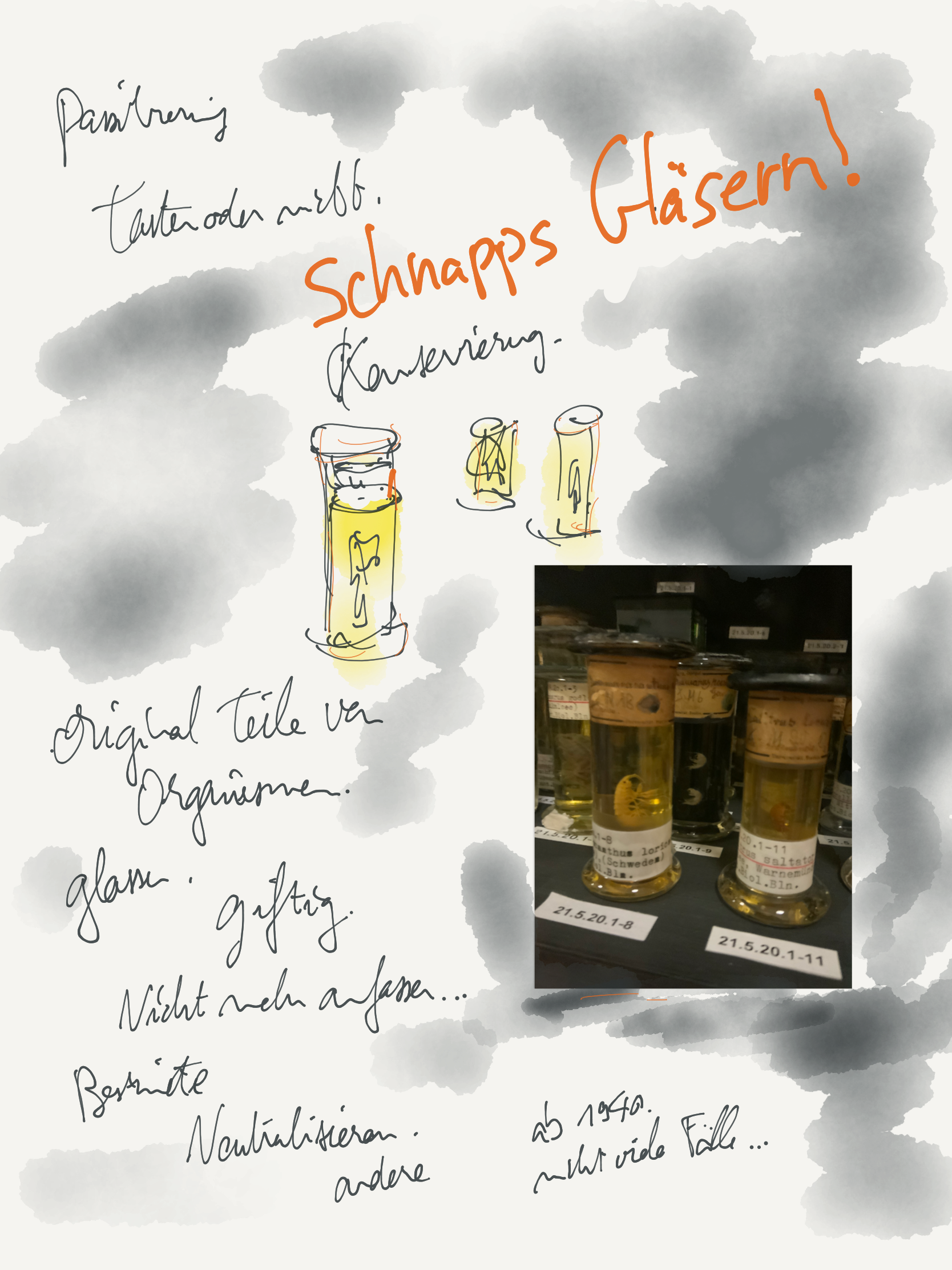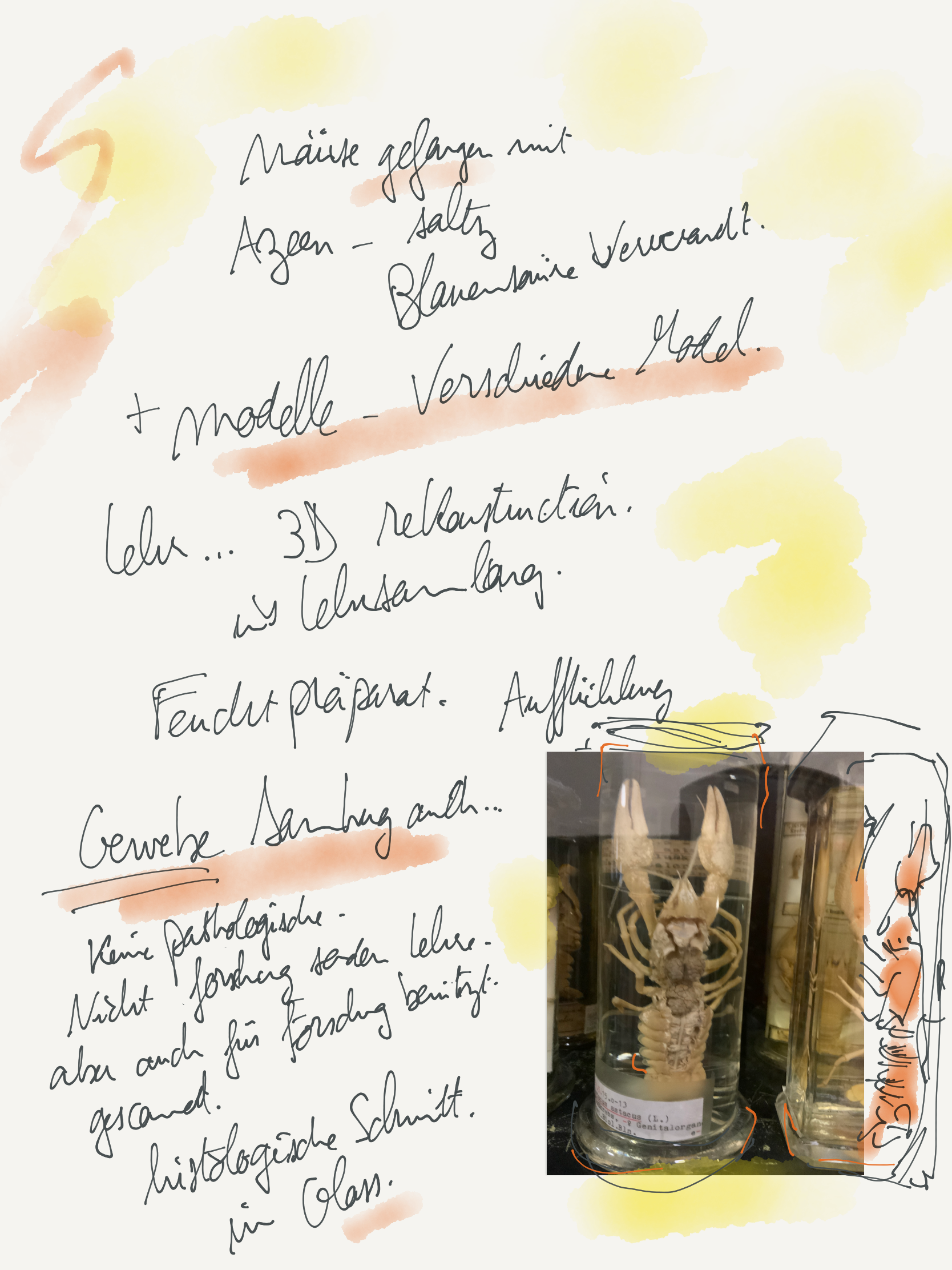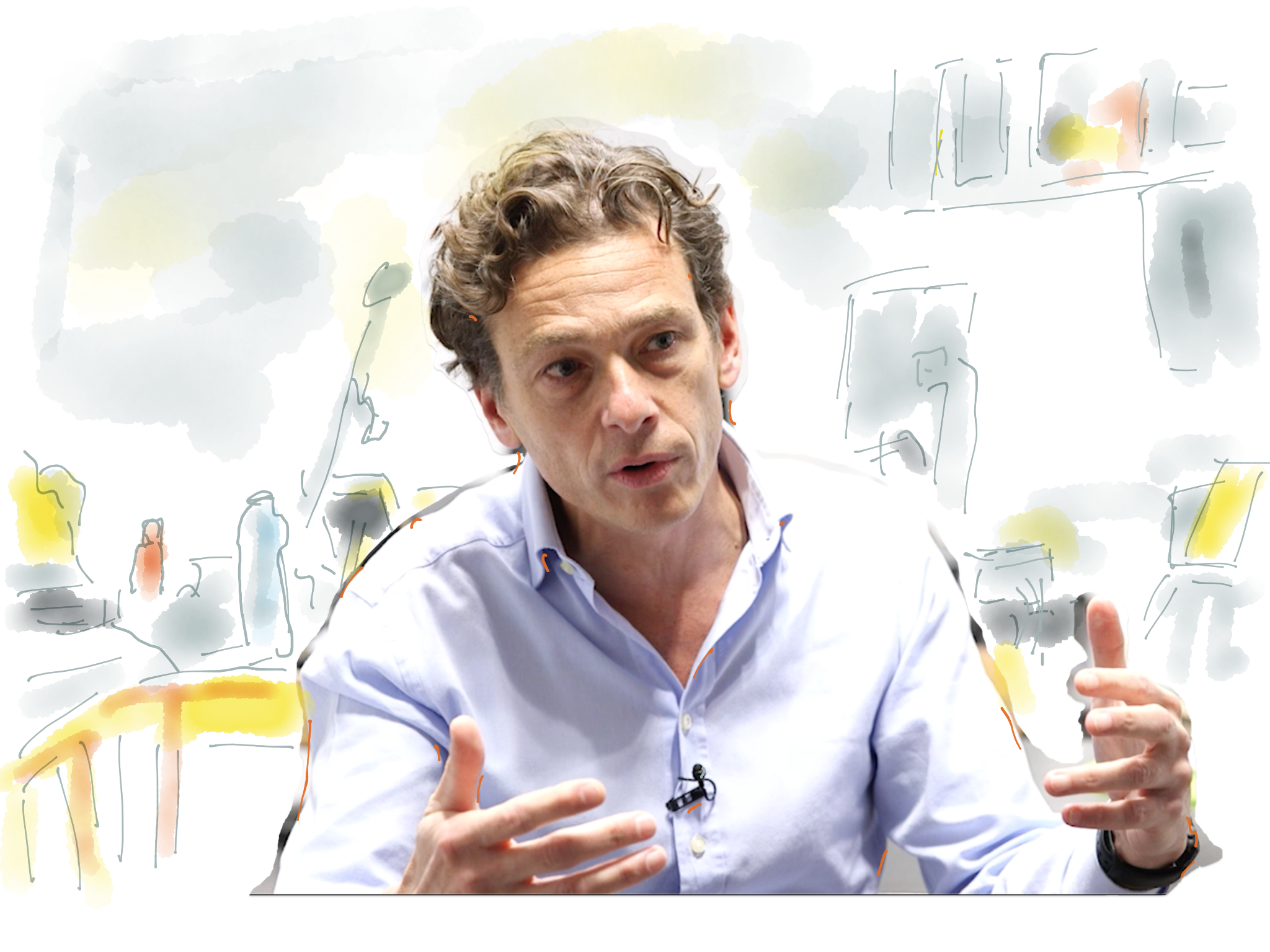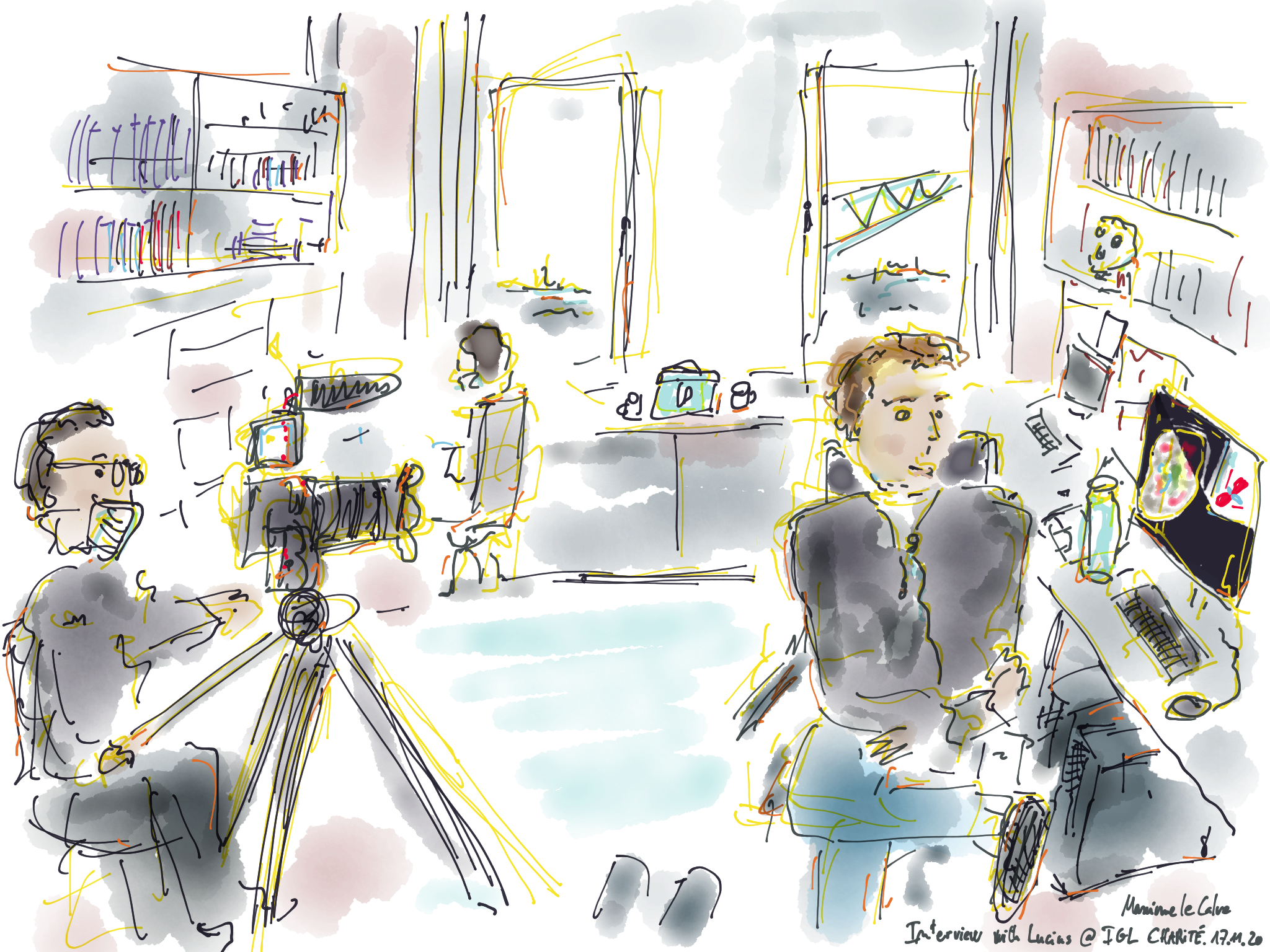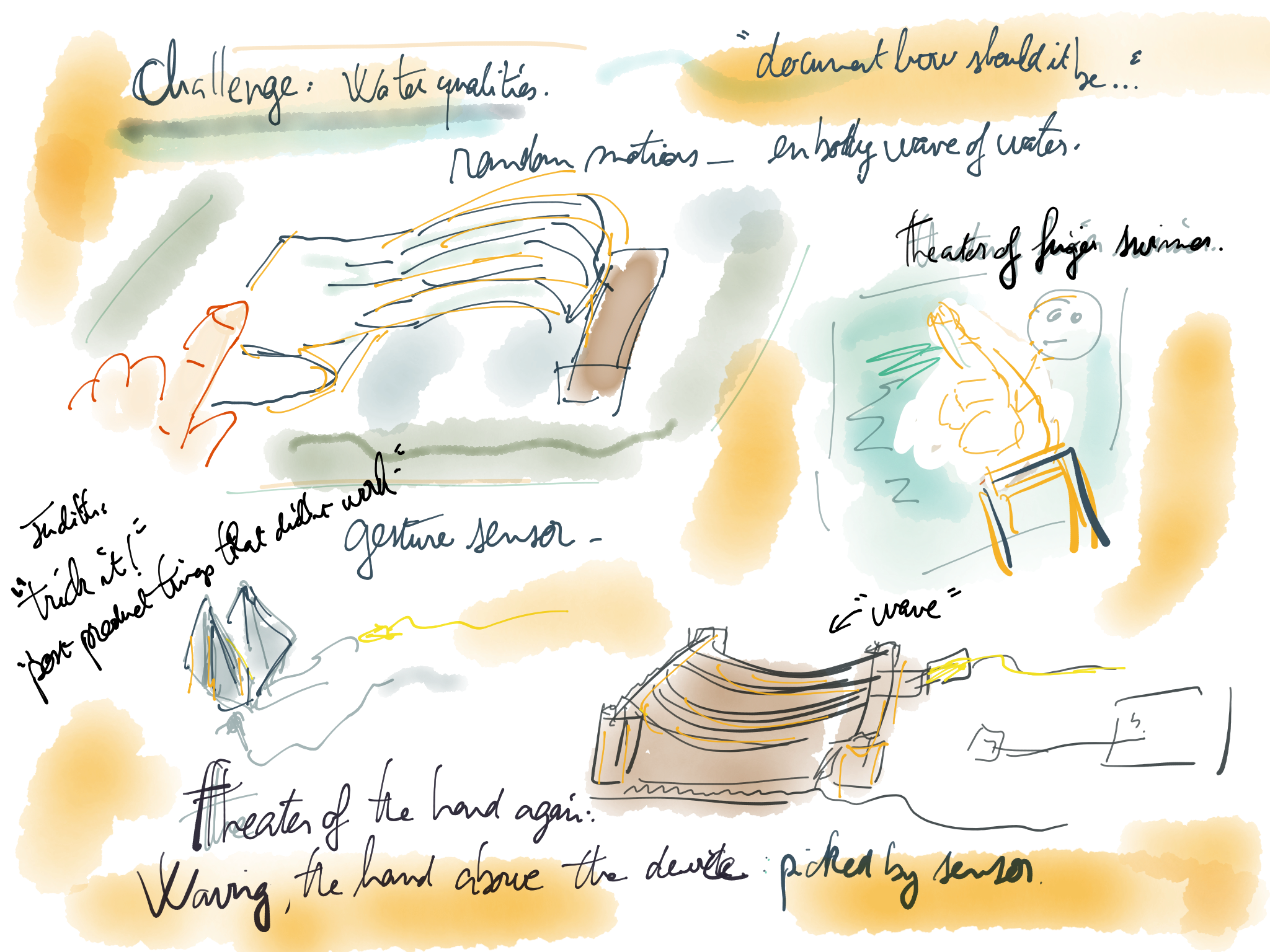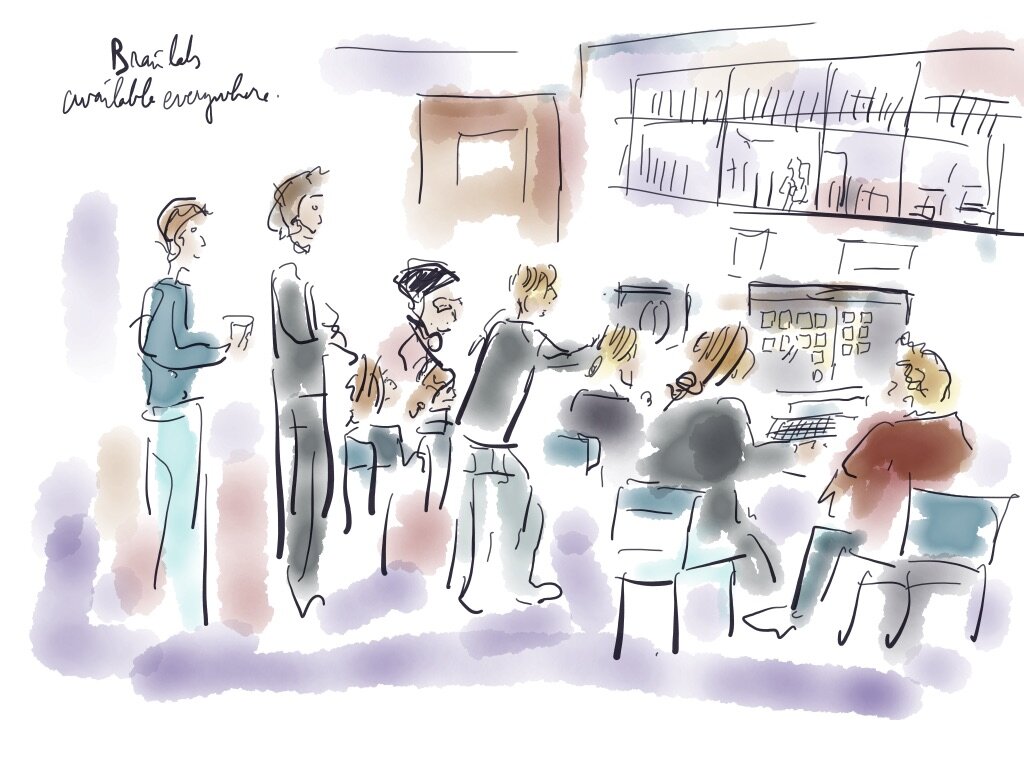A few days ago, Nina Samuel and I were invited to visit the pedagogical collection of the Zoological Institute at the Humboldt. As a preparation for the exhibition “Stretching Materialities” at TA T, we are conducting fieldwork on the activity of the materials of collection objects, attending to the ways humans try to passify them – and how the materials keep counteracting their efforts. Gerhard Scholtz, who directed the institute for a few decades, and Ines Drescher, a trained biologist who is taking care of the collection since 1999, brought us around and told us the stories of the place. We were also witnessing a passage for the collection, as our cluster colleague John Nyakatura is officially taking over the direction of the collection.
This collection is a “Lehrsammlung”, a pedagogical one. Unlike a research collection, it is an everyday companion to the many people who work and study at the institute of Naturkunde. Huge glass vitrines in the hallway keep the bulk of these objects, which are both exhibited and stored away, always at the visual reach of passers-by. They are supports to tell zoological stories, stories of evolution, reproduction, and anatomy. They document and convey the immense diversity of animal life in its many realms. They express a great variety of the many inventive ways that artists and scientists have been trying to preserve their shape and colors or to copy them at other scales.
Many specimens are kept bottled up into “schnapps glasses,” with preservative liquid keeping the bodies away from oxygen and from the passage of time. Some of the glasses present the same animal dissected in thematic ways, to highlight the nervous system or the digestive one. All glasses are labeled with the Latin name of the species and an inventory number. The first thing that escapes is color, says Gerhard Scholtz. The “schnapps” has to be refilled regularly too, because it escapes as well, however tight the glasses might be. This escaping of color brought me to think of the concept of the fugitive that Trudi Lynn Smith and Kate Hennessy have been working out in the ethnographic collection of British Columbia, which they retrieved from a tour in the archives: “Fugitive objects, for Ann, are the things that cannot be preserved because of their inevitable material deterioration, their obsolescence as techno-logical systems, or their precarity as orphaned or unclassified residents of the archive” (2020, 115). Color photographs turning magenta over the years bear witness of the impossibility of the preservation mission that ethnographic documentation came to be imbued with – which is here mirrored in the zoological collection. Animal diversity and their kaleidoscopic colors are fading away out there too.
The glass contents seem to have least suffered from the passage of time: they become protected from air, from insects, from vibrations, and… from inquisitive hands. Other ways to preserve include various substances that are now considered poisons, and cannot be left laying around into a pedagogical collection. Our hosts tell us many stories related to this or that object. We get to weigh a tooth of an elephant, to observe closely wood carved by castors, get a look at glass or plastic models.
After the presentation of the vitrines, we head to the back room of the collection. I take out my 360° camera to give you a glimpse of the peculiar atmosphere of the place.
This whole space used to be only one vast room, Ines tells us, it was hosting the museum of the Tieranatomisches Institut (the veterinary anatomical institute). It used to have a gallery hanging on its wall. After the war, the Marxist Leninist made this space into their office, divided the space, evacuated the collection, and put up typical East German wallpapers. The pedagogical collection took again possession of the premises after the fall of the communist regime. Poorly funded, the collection and its guardians have been trying their best to maintain the objects into the best possible conditions, fighting the best they can against invisible and mighty enemies such as moth, dust, and clumsy student fingers. According to Smith and Hennessy, the fugitive brings the object into a zone of indeterminacy, between the archival and the unarchival – and here between the pedagogical and the unpedagogical perhaps (ibid.)
The collection entails a huge amount of wall charts, which are still in use despite the hegemony of the PowerPoint presentation. “Some people will show 80 slides in a session. But when you have these on the wall for one hour and a half, you watch them also in moments of inattention. That’s called impregnation learning,” says Gerhard Scholtz. Some of them are printed in color lithographs, others by hand with Indian ink and color pencils. As one can see in the video, several rooms are now full with them, as the team decided to salvage the collection of the Freie Universität Berlin by accepting to store them, showing a dedicated affection to them. An exhibition at the TA T was curated by Gerhard Scholtz a few years ago to show a selection of them (2019, Zoology in Pictures. The Wall Charts of the Zoological Teaching Collection) – many of them have highly decorative value too. “Name a price!”, jokes Gerhard Scholtz. Nina and I wished we could acquire a few but the collections of the university are secured out of the grasp of visitors by their passionate guardians.
However, the minuscule scale of some of the visitors makes the collection difficult to guard. Looking around the collection for testimonies of material activities, Gerhard and Ines fish out a bat whose wings and skin got eaten up by moths. One can now see the cotton filling that replaced the muscles of the creature. Collections are ecologies by themselves, as my colleagues Tiziana Nicoletta likes to remind us, in her ethnographies of the insects at work behind the scene and actually under the floor paneling (2017). The chemicals that used to repel and exterminate them are now forbidden to use, complains Ines. In many boxes, provisions of adhesive moth traps testify of the desperate effort to limit their disastrous scavengings.
Ines shows us another example of the damage made by moth to the specimen. However, she confides that the main decaying force to this collection remains human: the many generations of students who have handled the samples keep flowing in and out of the institution. The “digital natives” may not understand the value of these analog knowledge sources of this fragile collection: “I want to do genetics anyways”, they would say. One of the most important bodies of objects, which is still in use, is the collection of tissues, which sits in several large wooden cabinets. Each of them encased in glass sheets to be inspected by the microscope, they are highly vulnerable to mistakes in instrument manipulation (see Scholtz 2011). Before we leave, we get a peek at the huge teaching hall, which comes in handy in Covid crisis time, as many students can sit together while respecting the necessary social distance.
Generations of students have used up the collection – they are the reason for its existence and a factor of its decay.
Bonus: did you ever wonder how the Greeks had the idea of the cyclops? It hit Gerhard Scholtz once, as he was doing a research stay at the collection of Paris Natural History Museum.
The nasal cavity of the skull of an elephant can be misinterpreted as a giant eye socket. During the epoch of Homer, it is possible that the skulls of elephants could be found in the Mediterranean. "I wasn't the first to have the idea," he says humbly, there was already a text about this from the beginning of the early 20th century. An imaginary skeleton picture collaging together that animal skull to a human body, a small cardboard with an excerpt of the Odyssee, and an illustration of the cyclops: The huge skull that adorns the hallway stands for the ambiguity of the zoological remnants and the imaginary they trigger. It seems also displaced in time, directly imported from a mythological past of the golden age of a colonial era, into which animals still played an active role in everyday locomotion and real anxiety for the explorer. What's your story, cyclops? Today your name is "nobody."

